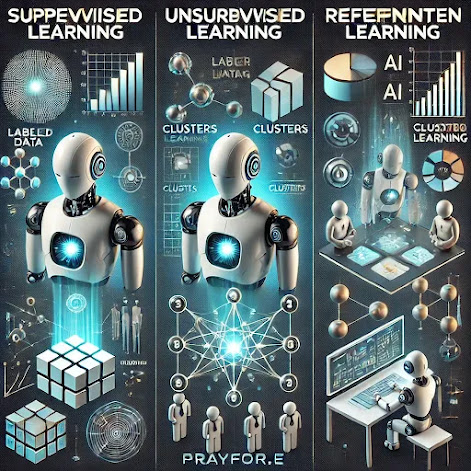Reinforcement Learning Algorithms: The Brain Behind Smarter AI 🤖💡
Have you ever wondered how robots learn to walk, or how AI masters complex games like chess and Go?
The answer lies in reinforcement learning algorithms, a fascinating subset of artificial intelligence that allows machines to learn from their mistakes and improve over time.
Let’s explore how these algorithms work and why they’re revolutionizing the world of technology! 🚀
What is Reinforcement Learning? 🧠
Reinforcement Learning (RL) is a type of machine learning where an agent learns to make decisions by interacting with an environment.
The agent takes actions, receives feedback in the form of rewards or penalties, and learns to maximize the total reward over time.
Imagine training a dog to fetch. Every time it fetches the ball, you give it a treat (reward).
If it runs off instead, you withhold the treat (penalty).
Over time, the dog learns the behavior that earns the reward.
RL operates on the same principle!
Core Components of RL Algorithms 🔍
1️⃣ Agent, Environment, and Actions
- Agent: The decision-maker (e.g., a robot or a self-driving car).
- Environment: The world the agent interacts with (e.g., a simulated road for self-driving cars).
- Actions: The choices available to the agent at any given moment.
2️⃣ Rewards and Policies 🏆
- Reward: A signal that tells the agent how well it’s doing (positive or negative).
- Policy: The strategy the agent uses to decide its actions based on its observations.
3️⃣ Value Functions and Models
- Value Function: Predicts the long-term rewards of actions.
- Model: Simulates the environment, helping the agent predict outcomes of actions.
Popular Reinforcement Learning Algorithms 📘
1. Q-Learning 🧮
A model-free algorithm that helps the agent learn the value of actions.
- How It Works:
- The agent maintains a Q-table, storing the expected rewards for each action in each state.
- Through exploration and updates, it improves the Q-table over time.
- Use Cases: Teaching AI to play simple games like Pac-Man! 🎮
2. Deep Q-Networks (DQN) 🖥️
Combines Q-learning with deep learning. Instead of a Q-table, it uses a neural network to approximate values.
- Key Advantage: Handles complex problems with large state spaces.
- Famous Example: DeepMind’s DQN that mastered Atari games.
3. Policy Gradient Methods 🎯
Instead of focusing on values, these algorithms optimize the policy directly.
- How It Works: The agent updates its policy to maximize expected rewards.
- Popular Algorithm: Proximal Policy Optimization (PPO), widely used in robotics and simulations.
4. Actor-Critic Algorithms 🎭
A hybrid approach combining value-based and policy-based methods.
- How It Works:
- The actor decides the action to take.
- The critic evaluates the action’s value.
- Why It’s Great: Balances exploration and exploitation effectively.
Applications of RL in the Real World 🌎
1. Gaming 🎮
From AlphaGo defeating world champions to OpenAI’s bots excelling at Dota 2, RL has transformed competitive gaming.
2. Autonomous Vehicles 🚗
RL enables cars to navigate dynamic environments, obey traffic rules, and avoid obstacles.
3. Robotics 🤖
Robots use RL to learn tasks like assembling parts or navigating complex terrains.
4. Personalized Recommendations 📱
Streaming platforms like Netflix and YouTube use RL to curate content based on your preferences.
Challenges in Reinforcement Learning ⚠️
1. Exploration vs. Exploitation Dilemma
Should the agent explore new actions or stick to what it knows works best? Finding the balance is tricky.
2. Sample Inefficiency
Many RL algorithms require millions of interactions with the environment, making training time-consuming.
3. Reward Design
A poorly designed reward system can lead to unintended behaviors in the agent.
Why RL is the Future of AI 🔮
Reinforcement learning mimics the way humans and animals learn, making it incredibly powerful and versatile.
As we integrate RL into more industries, its potential to solve complex problems grows exponentially.
Whether it’s optimizing supply chains or creating adaptive learning systems, RL is unlocking new frontiers in AI.
Take the First Step Today! 🌟
If this has piqued your interest, dive into beginner-friendly resources like OpenAI Gym or Coursera courses.
Practice building your own RL agents and watch them grow smarter with each iteration.
The future of AI is here, are you ready to be part of it?


%20and%20Large%20Language%20Models%20(LLMs).%20The%20image%20features%20a.webp)


%20in%20action.%20The%20image%20shows%20a%20glowing,%20complex%20neural%20network%20resembling%20a%20brain.webp)



